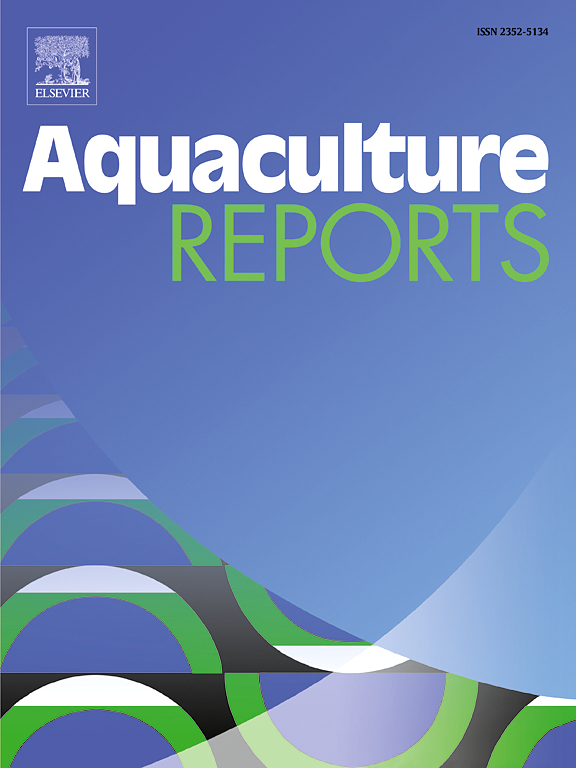Composition and distribution characteristics of the eukaryotic community in seawater and saline-alkali water ponds and their correlation with the nutritional components of Scylla Paramamosain
IF 3.2
2区 农林科学
Q1 FISHERIES
引用次数: 0
Abstract
We examined the correlations between the nutritional components of Mud crab Scylla paramamosain and the variation of eukaryotic communities in two types of aquaculture ponds in north China. The data covered the eukaryotic communities in the water and the sediment of two different types of ponds in two seasons. The dominant phyla of eukaryotic organisms in the seawater pond and the saline-alkali water pond included Ochrophyta, Bacillariophyta, Arthropoda, Alveolata, and Bicosoecida. Based on PCoA and NMDS analyses, the eukaryotic community structure of sediment samples from seawater ponds and saline-alkaline ponds showed minimal spatiotemporal differences. In contrast, water samples from these two types of ponds exhibited significant spatiotemporal variability. For both ponds, RDA analysis indicated that salinity, dissolved oxygen, and ammonia nitrogen significantly influenced the eukaryotic community in the water, whereas salinity, pH, and dissolved oxygen significantly influenced the eukaryotic community in the sediment. For the seawater pond, the eukaryotic communities in the sediment had higher diversity indexes (Chao1 index, Pielou_e index, Shannon index, and Simpson index) than those in the water, and for the saline-alkali water pond, the diversity indexes were significantly higher in September than in June. The indicate eukaryotic species, identified by the IndVal method, had significant correlations with the nutritional quality of S. paramamosain. The results are expected to facilitate the aquaculture of S. paramamosain in north China.
求助全文
约1分钟内获得全文
求助全文
来源期刊

Aquaculture Reports
Agricultural and Biological Sciences-Animal Science and Zoology
CiteScore
5.90
自引率
8.10%
发文量
469
审稿时长
77 days
期刊介绍:
Aquaculture Reports will publish original research papers and reviews documenting outstanding science with a regional context and focus, answering the need for high quality information on novel species, systems and regions in emerging areas of aquaculture research and development, such as integrated multi-trophic aquaculture, urban aquaculture, ornamental, unfed aquaculture, offshore aquaculture and others. Papers having industry research as priority and encompassing product development research or current industry practice are encouraged.
 求助内容:
求助内容: 应助结果提醒方式:
应助结果提醒方式:


